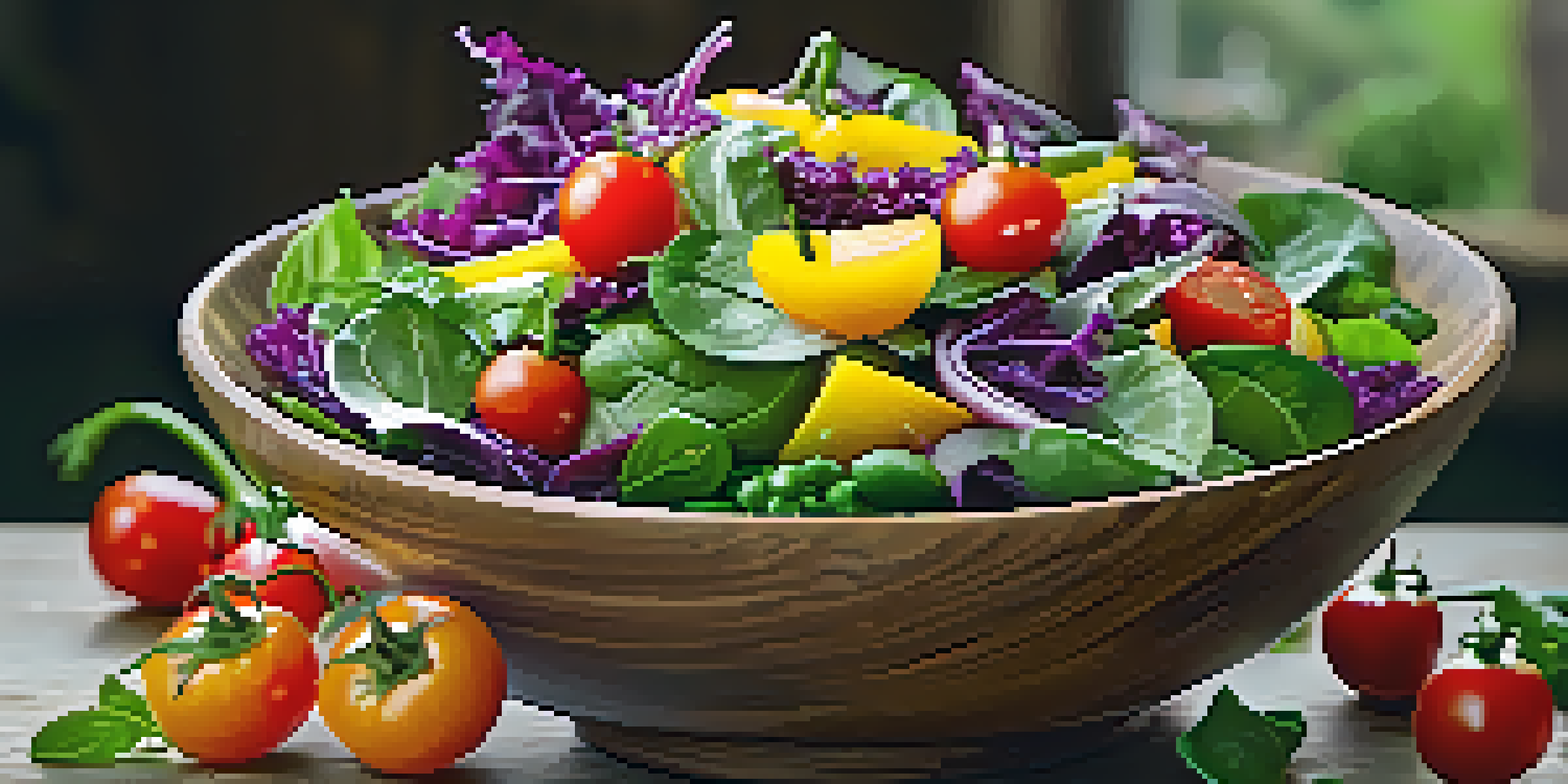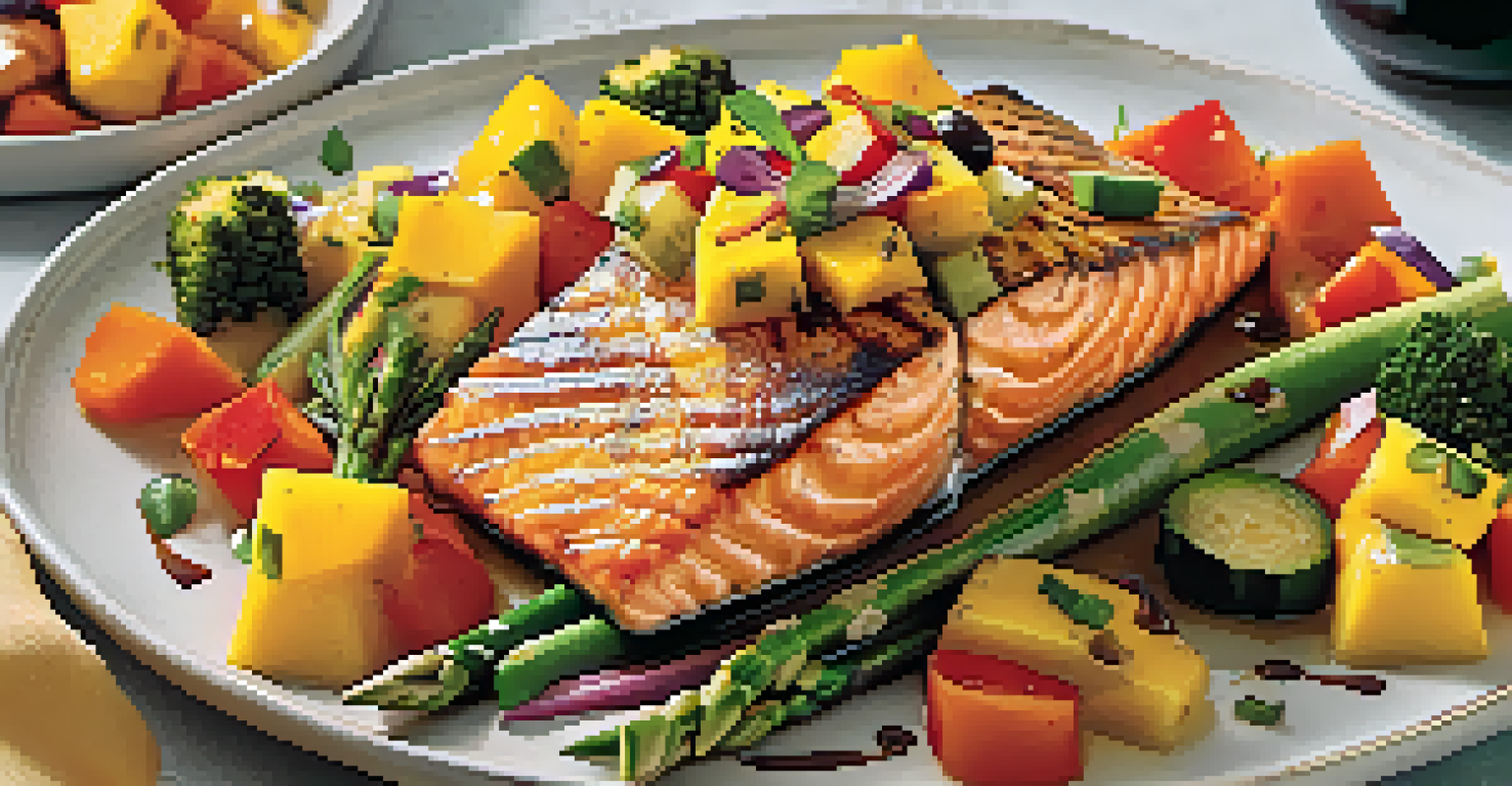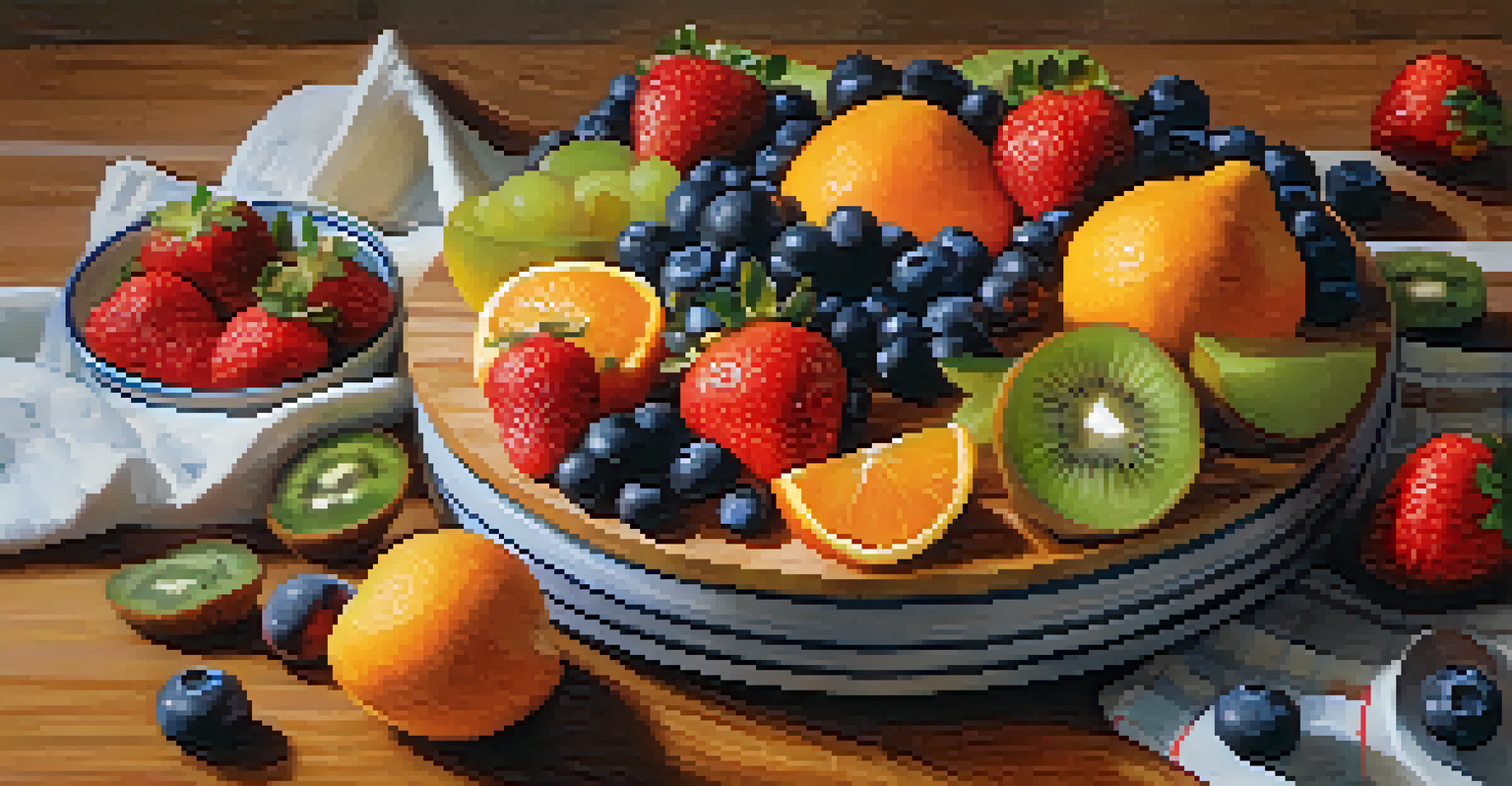Cooking with Color: How to Create Visually Stunning Dishes

The Importance of Color in Cooking
When we talk about cooking, we often focus on taste, but color plays a vital role too. The visual appeal of a dish can elevate a meal from ordinary to extraordinary. Think about it: a vibrant plate of roasted vegetables or a colorful salad instantly captures attention and stimulates appetite.
Color is the keyboard, the eyes are the harmonies, the soul is the piano with many strings.
Colors can evoke emotions and set the mood for your dining experience. For instance, bright reds and yellows can create a sense of warmth and happiness, while greens bring freshness and health. By being mindful of the colors on your plate, you can enhance not just the aesthetics but also the overall enjoyment of your food.
Moreover, a colorful dish often indicates a variety of nutrients. Different colors usually represent different vitamins and minerals, making your meal not only beautiful but also nutritious. So, the next time you cook, remember that adding a splash of color can do wonders for your dish!
Choosing Vibrant Ingredients
To create visually stunning dishes, start by selecting ingredients that showcase a variety of colors. Think of bell peppers in red, yellow, and green, or a medley of berries in your dessert. The more colors you incorporate, the more eye-catching your dish will be, so don’t be shy about mixing things up!

Seasonal and local produce is often the most vibrant and flavorful. For instance, farmers' markets are a treasure trove of colorful veggies and fruits that can inspire your culinary creativity. By choosing fresh ingredients, not only do you enhance the color palette of your dish, but you also support local agriculture.
Color Enhances Meal Enjoyment
A vibrant array of colors on your plate not only makes food more visually appealing but also enhances the overall dining experience.
Don’t forget about herbs and garnishes! Fresh herbs like parsley, basil, or cilantro can add a burst of green, while edible flowers like nasturtiums can bring an unexpected pop of color. These little additions can make a big difference in the presentation of your plate.
Building Layers of Color and Texture
Creating a visually appealing dish isn't just about color; texture plays a key role too. Imagine a layered salad with crisp greens, creamy avocado, and crunchy nuts. The contrast between different textures paired with a variety of colors adds depth and intrigue to your plate.
Food is not just what we eat, it is how we eat, and how we present it to others.
Consider stacking or layering your ingredients instead of mixing them all together. This technique can showcase each component's color and texture individually. For instance, a well-arranged tower of roasted vegetables not only looks stunning but also allows each flavor to shine through.
Additionally, using different cooking methods can enhance the visual appeal. Think about the difference between raw, roasted, or grilled vegetables; each method brings out unique colors and textures. By playing with these elements, you can create a dish that’s not only a feast for the eyes but also for the palate.
Utilizing Colorful Sauces and Dressings
Sauces and dressings can be powerful tools for enhancing the color of your dishes. A bright green pesto or a vibrant red tomato sauce can elevate the visual appeal of even the simplest meals. By drizzling or dolloping these sauces on your plate, you can create striking contrasts against your main ingredients.
Experimenting with different sauces can also add layers of flavor. For example, a sweet and tangy mango salsa not only introduces a beautiful yellow color but also a burst of freshness that complements grilled fish. The key is to balance the colors and flavors to create a harmonious dish.
Choose Seasonal Ingredients
Incorporating seasonal and local produce can elevate the color and flavor of your dishes while supporting local agriculture.
Don’t forget to think about how you plate your sauces. A simple swipe across the plate can add an artistic touch, while a sprinkle of herbs or seeds can add texture and additional color. The way you present your sauce can transform your dish into a work of art.
The Art of Garnishing
Garnishes are the finishing touches that can take your dish from good to great. A sprinkle of colorful microgreens, a drizzle of balsamic reduction, or a few slices of radish can add an extra layer of color and sophistication. These small details can make a huge impact on the overall presentation.
When garnishing, aim for elements that complement the flavors of your dish. For instance, if you're serving a rich pasta dish, fresh basil or a sprinkle of Parmesan can enhance both the look and taste. Keep in mind that garnishes should be edible and contribute to the overall flavor profile.
Remember, less is often more when it comes to garnishing. A simple yet elegant touch can be more effective than overloading your dish. The goal is to enhance the existing colors and flavors without overwhelming the plate.
Creating Seasonal Color Palettes
Each season brings its own palette of colors, and using seasonal ingredients can inspire your cooking. In spring, think of bright greens and pinks with asparagus and radishes, while summer offers vibrant reds and yellows with tomatoes and corn. Embracing these seasonal colors can create dishes that feel fresh and timely.
Planning your meals around the season can also make grocery shopping easier and more enjoyable. You’ll find that seasonal produce is often more affordable and flavorful, allowing you to create stunning dishes without breaking the bank. Plus, cooking with the seasons connects you with nature and encourages variety in your diet.
Garnishes Add Final Touches
Thoughtful garnishing can transform a dish, adding color and sophistication that enhance both presentation and flavor.
To take it a step further, consider pairing seasonal dishes with themed table settings or decorations. For example, a fall harvest-themed meal could include pumpkins and squash on your table, enhancing the overall dining experience and making your colorful creations even more inviting.
Incorporating Cultural Influences for Color
Exploring different cuisines can introduce you to a world of colors and flavors. Many cultures have signature dishes that are not only delicious but also visually stunning. For example, Indian curries are known for their vibrant spices, while Mediterranean dishes often highlight colorful vegetables and herbs.
By incorporating elements from various culinary traditions, you can expand your palette and creativity in the kitchen. Try adding saffron-infused rice or vibrant beet hummus to your menu. These ingredients can not only add color but also a unique twist to your meals.

Cultural influences can also inspire the way you present your dishes. Consider how certain traditions use specific colors for festivities or celebrations, and apply those ideas to your cooking. This not only makes your dishes visually appealing but also tells a story through food.